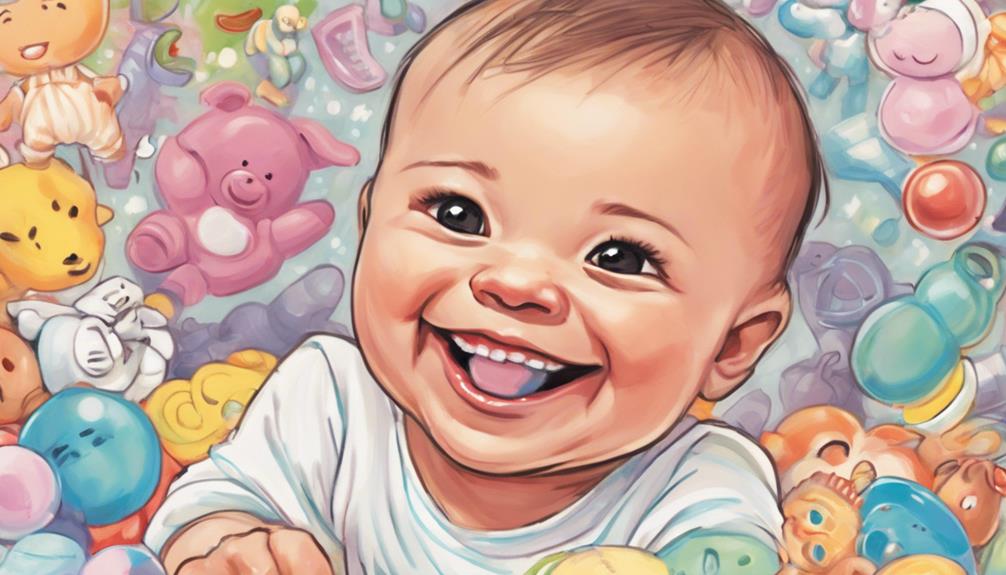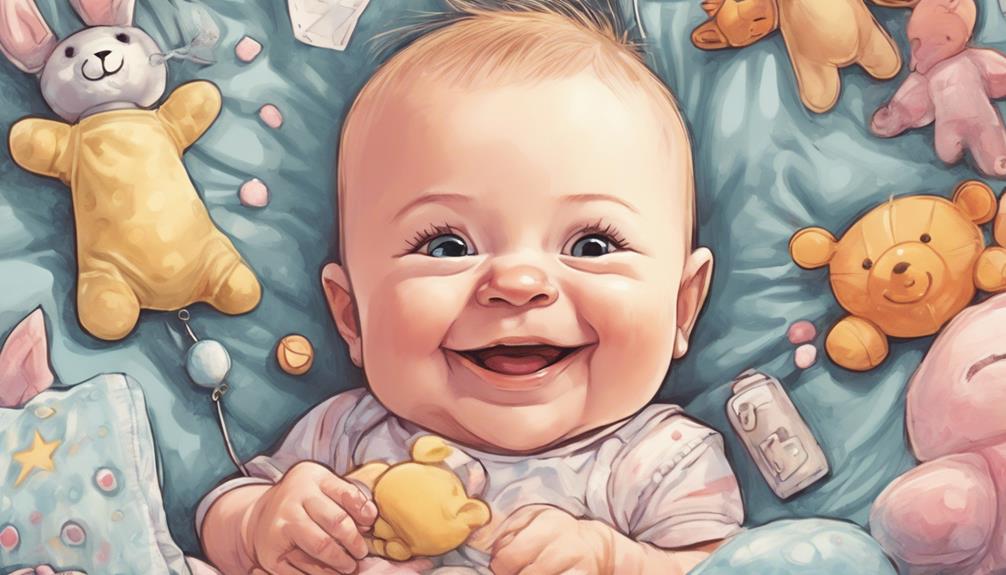Babies usually get their first teeth, known as the lower central incisors, between 6 to 10 months. After that, the upper central incisors typically follow, coming in around 8 to 12 months. You might notice symptoms of teething, like irritability and drooling. As those little teeth start to erupt, managing discomfort can become a priority for both you and your baby. Gentle massages, chilled teething rings, and even frozen washcloths can help soothe their sore gums. If you're curious about what comes next or how to care for those new teeth, there's plenty more to explore!
Key Takeaways
- The first teeth to erupt in babies are the lower central incisors, typically between 6 to 10 months of age.
- Following the lower central incisors, the upper central incisors usually appear between 8 to 12 months.
- Lateral incisors emerge next, with upper lateral incisors appearing from 9 to 13 months and lower lateral incisors from 10 to 12 months.
- First molars generally come in after the incisors, between 13 to 19 months of age.
Understanding Teething

Teething can be an exciting yet challenging milestone for both you and your baby as those first tiny teeth start to emerge. Understanding the teething process is crucial, especially when your little one experiences signs of discomfort.
Typically, the first teeth to erupt are the lower central incisors, appearing between 6 to 10 months. Following closely, the upper central incisors usually make their debut around 8 to 12 months.
After these, the lateral incisors come next, with the upper ones emerging between 9 to 13 months and the lower ones around 10 to 12 months. As your baby grows, the molar teeth will typically begin to appear from 13 to 19 months, followed by canines between 16 to 22 months. By age three, most children will have all 20 primary teeth.
Teething pain can be tough for both of you, so it's important to recognize the symptoms. Your baby may exhibit irritability, drooling, or a desire to chew on objects.
Teething gels can help soothe discomfort, making this change a little easier for your family.
Timeline of Tooth Eruption
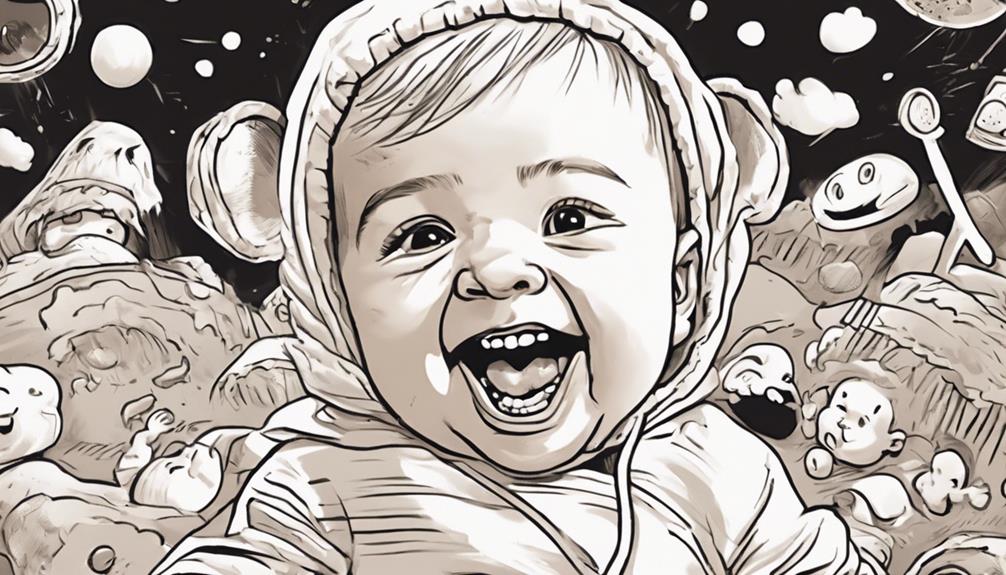
The timeline of tooth eruption reveals a fascinating progression as your baby's first teeth begin to emerge, starting with the lower central incisors around 6 to 10 months. This marks the beginning of the journey as baby teeth come in, with the upper central incisors typically following around 8 to 12 months.
Next in line are the lateral incisors, with the lower ones appearing between 10 to 12 months and the upper ones between 9 to 13 months. As your child approaches the toddler stage, the first molars usually erupt between 13 to 19 months, followed by the canines (or cuspids), which come in between 16 to 22 months.
The final phase of the timeline of tooth eruption features the second molars, which are generally the last primary teeth to come in, erupting between 25 to 33 months. By the time your child reaches age 3, they'll have a complete set of 20 primary teeth.
Keeping an eye on this eruption chart helps you track the development of those important incisors and molars as your little one grows.
Signs of Teething
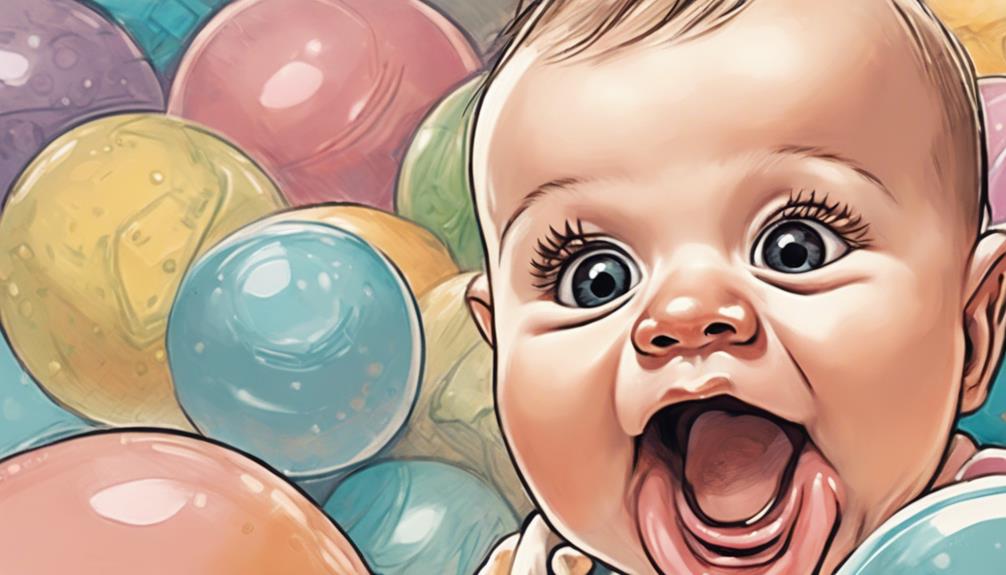
You might notice several signs that indicate your baby is starting to teeth around 4 to 7 months of age. The first teeth typically to emerge are the lower central incisors, usually appearing between 5 to 7 months.
One of the most common signs of teething is increased drooling. You may find your baby constantly wetting their clothes as they seek to chew on objects to soothe their gums.
Irritability and fussiness can also arise during these months. While some babies may experience significant discomfort, others mightn't show much pain at all. Swollen and tender gums are often visible, and you might observe a slight temperature increase, although a high fever usually signals another health issue.
Additionally, changes in sleep patterns are common signs of teething. You may notice your baby waking up more frequently or having disrupted sleep.
Recognizing these signs early on can help you understand what your baby is going through as they get their first teeth. By paying attention to these indications, you can better support your little one during this important developmental stage.
Managing Teething Discomfort
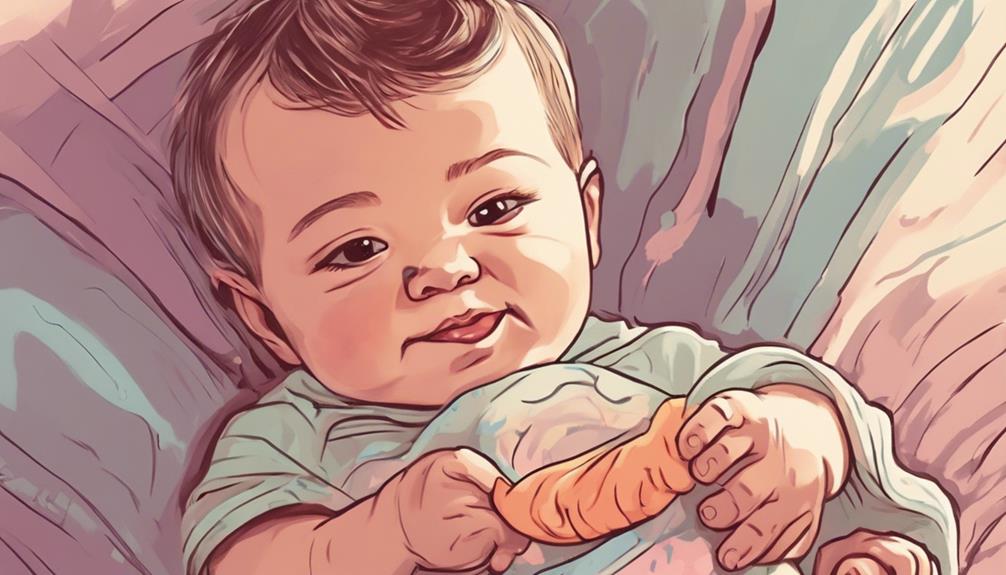
Managing your baby's teething discomfort can help ease their irritability and improve their overall well-being during this challenging time. As babies start teething, usually around 6 to 10 months of age, you might notice them experiencing discomfort as their central incisors break through the gums.
To soothe their aching gums, try gently massaging them with a clean finger or a chilled teething ring. The coolness provides soothing pressure that can alleviate some of the teething pain. You'll also find that your baby may drool more and want to chew on various objects. It's important to keep their face dry to prevent rashes. Cold items, like frozen washcloths or teething toys, can be particularly effective in numbing the gums and reducing discomfort.
If your baby seems to be in severe pain despite these methods, it's best to consult a pediatrician. They can offer guidance on appropriate pain relief options, as over-the-counter medications should be used cautiously with infants.
Dental Care for Infants

Establishing good dental care for infants starts even before their first tooth appears, making it crucial to clean their gums regularly with a soft cloth. This early habit helps prevent tooth decay and sets the stage for positive oral health practices.
Once that first tooth emerges, it's time to switch to a soft-bristled toothbrush and use a smear of fluoride toothpaste.
Here are three key steps for effective dental care for infants:
- Clean Gums: Use a soft cloth to wipe your infant's gums daily, even before teeth appear.
- Start Brushing: When the first tooth comes in, brush it gently with a soft-bristled toothbrush and a small amount of fluoride toothpaste.
- Regular Check-Ups: Schedule dental check-ups by age 1 or when the first tooth appears to monitor dental development and catch any issues early.
Additionally, avoid putting your infant to bed with a bottle, as this can lead to tooth decay.
Educate yourself on proper oral hygiene, including the use of fluoride toothpaste after age 2, to guarantee your child's smile stays healthy as they grow.
Frequently Asked Questions
In What Order Do Babies Get Their Teeth?
When your baby starts teething, the first teeth usually come in as lower central incisors. Next, you'll see the upper central incisors, followed by lateral incisors, molars, canines, and finally, second molars. As your baby teeth development progresses, it is important to help soothe their discomfort during teething. You can offer them a clean, chilled teething ring or gently rub their gums with a clean finger to ease the pain. It’s also important to start establishing good oral hygiene habits early on to ensure the health of their baby teeth.
Can Babies Get Top Teeth First?
Imagine a baby's smile lighting up the room. While it's rare, some babies can erupt top teeth first, but usually, the lower central incisors emerge first. Embrace the journey of teething—it's all part of growing up!
What Teeth Do Babies Get First When Teething?
When teething, you'll notice babies usually get their lower central incisors first. These typically emerge between 6 to 10 months, followed by the upper central incisors around 8 to 12 months.
How Long Does It Take for Teeth to Break Through the Gums?
Teeth usually take a few days to a week to break through the gums. The entire teething process spans several months, with each tooth emerging one at a time, varying for every child.
What Is the Typical Order in Which Babies’ Teeth Erupt?
The baby’s first teeth eruption sequence usually begins with the two bottom front teeth, followed by the two top front teeth. Then the teeth on either side of the front teeth, called the lateral incisors, will erupt. The first molars typically come next, followed by the canines, and finally the second molars.
Conclusion
In the journey of parenthood, teething is like a rite of passage, marking your baby's progression into a new stage of growth.
As those first tiny teeth make their grand entrance, it's important to remember that discomfort is temporary. You can soothe your little one with gentle care and patience.
Keep up with their dental hygiene, and soon, you'll be greeted by that adorable toothy grin, shining brightly and ready to take on the world!
